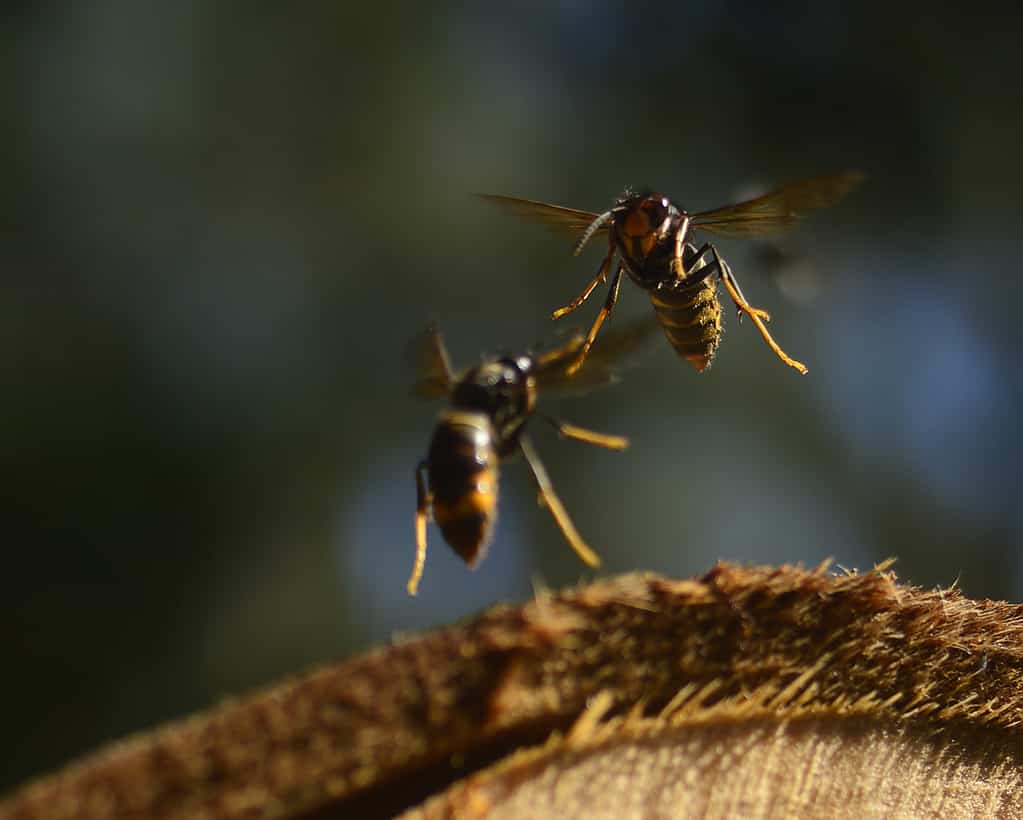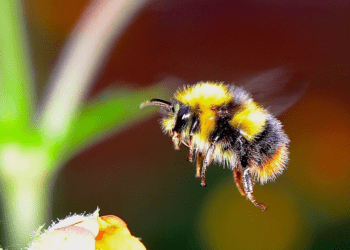
Originally from southeast Asia, the Asian hornet (Velutina nigrithorax), also known as the yellow-legged hornet, is the first insect to be classified as an invasive alien species of concern in Europe. Simply put, it’s bad news — both for humans and for the environment.
The invasion has expanded at a rate of up to 78 kilometers (≈48 mi) per year in some regions, risking the safety of insect pollinators such as bumblebees of the genus Bombus. But the bumblebees aren’t giving up without a fight.
A new study shows that when bumblebees are attacked, they drop to the ground, taking the hornet down with them. This causes the hornet to lose its grip or the bee raises its sting and battles until the hornet gives up. Researchers saw over 120 of these attacks, with bumblebees resisting every time.
Hornets and bumblebees
“Asian hornets prey on a wide range of insects, including honey bees, but little is known about their impact on other pollinators,” Thomas O’Shea-Wheller of the University of Exeter, study author, said in a news release. With honey bees, horners hover outside the bees’ nest and attack returning foragers. They also do this to bumblebees but are largely unsuccessful.
In their study, the researchers placed commercially reared bumblebee colonies at 12 locations across the province of Pontevedra, Spain, with different local Asian hornet densities. They weighed colonies every two days (weight is a measure of colony growth) and found those in areas with higher Asian hornet densities grew slower.
The researchers don’t know with certainty why this happens. “It’s possible that some external factor is good for Asian hornets, allowing them to thrive, but bad for bumblebees. However, it’s perhaps more likely that the presence of Asian hornets limits the success of bumblebee colonies,” O’Shea-Wheller said in a news release.
This suggests that bumblebees’ unique fighting skills might not be enough to tackle the hornets. Previous studies found that bumblebees foraging at flowers alter their behavior in response to hornet attacks, reducing the efficacy of resource collection. Also, increased exploitation of nectar in areas with many hornets could reduce resources.
Pollination at risk
Wild bees are of specific concern amid a decline in their numbers. The honeybee lifespan is now 50% shorter than it was in the 1970s, while a quarter of all bees haven’t been seen since 1990. This has been linked to the interaction of multiple stressors, including pests, pesticides, poor nutrition, lack of genetic diversity, and management practices.
Overall, the study shows that Asian hornets frequently hunt bumblebee colonies, being mainly attracted to those with high foraging traffic. Hornets engage in repeated predation attempts at nest entrances but in many cases fail due to bumblebees’ surprising skills. But that doesn’t necessarily spell good news for the pollinators.
Preserving pollination services is a global concern, as over 85% of flowering plants rely upon animals for reproduction. When considering agriculture, this reliance is further intensified to a limited group of insects, with bees alone visiting over 90% of leading crop types. As such, a reduction in pollinator health is both a threat to biodiversity and food security.
The study was published in the journal Communications Biology.






